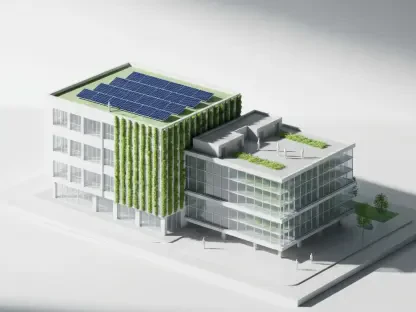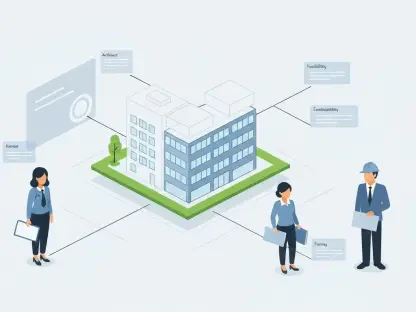The landscape of educational facilities is undergoing a transformative shift as the U.S. Green Building Council (USGBC) has announced monumental strides forward for its Center for Green Schools program. For over a decade, this initiative has been committed to revolutionizing school environments by equipping each U.S. school district with sustainable, safe, and healthy solutions for both students and educators. Having already achieved significant milestones, like certifying more than 2,500 schools as Leadership in Energy and Environmental Design (LEED) certified and creating a position for K-12 district sustainability directors, the program is now shifting its focus. This renewed emphasis targets rural communities, aiming to bridge the gap in access to resilient and health-centric educational facilities.
Expanding Access to High-Performance Schools
USGBC and CHPS Unite for Sustainable Growth
One noteworthy facet of this expansion is the integration of the Collaborative for High Performance Schools (CHPS) into the USGBC framework. CHPS, recognized for its pioneering efforts since 1999, initially zeroed in on improving energy efficiency within California’s schools. Over the years, however, its mission has broadened to enhancing school design, construction, and operations with an eye toward achieving high performance across the nation. This strategic union brings together the expertise of both entities, amplifying their capacity to foster environments conducive to optimal educational and operational outcomes. Low operational costs coupled with a commitment to boosting environmental sustainability are primary goals.
A significant drive behind this new initiative is a societal call to action, prompting the development of a fresh collaborative model for school design excellence. The timing is opportune, especially as funding for school infrastructure reaches unprecedented levels. Yet, a Government Accountability Office study from 2020 pointedly highlighted that approximately half of the nation’s school districts require urgent updates or overhauls to their core systems. By combining resources and knowledge, the newly formed collaborative seeks to empower local districts, expedite the creation of solutions specific to schools, and provide incentives for decisive action.
A New Collaborative for School Excellence
In this transformative approach, both USGBC and CHPS leaders emphasize the undeniable importance of ensuring schools are not only high in performance but also entrenched in health and green innovation. They champion the notion that this integration will substantially enhance the educational landscape and community infrastructure, encouraging an enriched learning environment. U.S. schools, as a pivotal element of communal facilities, provide daily services to about one-sixth of the country’s population.
The launch of the new collaboration underscores schools’ critical nature in fostering a progressive community landscape. However, this endeavor isn’t just limited to educational professionals. The Center for Green Schools strongly encourages participation and input from an array of stakeholders, including non-profits and private companies, in bolstering this initiative. By leveraging diverse expertise, the mission seeks to cultivate meaningful and long-lasting contributions toward sustainable school infrastructures.
Community and Global Implications
The Broader Impact of Sustainable Education
The emphasis on enhancing educational facilities isn’t just beneficial for schools themselves; it’s endemic to broader societal growth and sustainability. Education and sustainability intersect significantly at the community level, affecting not only students and teachers but also society’s larger structures. The initiative by USGBC and its partners reflects an understanding of schools as integral infrastructure on par with any other significant community utility.
This understanding promotes an inclusive perspective on education, viewing schools not just as learning environments but as vital community assets. It fosters inclusivity, creating universally accessible schools that meet stringent environmental and performance standards. Such schools then serve as living examples of sustainable practice, teaching future generations by example and influencing neighboring community projects in the same direction.
Implications for Future Generations
The anticipated success of integrated programs like these sets a foundation upon which future progress is built. Students in these high-performance, environmentally conscious schools learn lessons not only in academics but also gain exposure to real-world environmental stewardship. They gain firsthand insight into sustainable practices, instilling values and lessons they can carry into adulthood, thus perpetuating a cycle of informed and responsible citizenship.
Communities, in turn, stand to gain a future cohort deeply invested in sustainable growth. This investment in human capital within rural districts has broader implications, potentially influencing local economies, fostering innovation, and even encouraging demographic renewal. Through this adaptive and forward-thinking approach, USGBC and its partners chart a course toward educational excellence while paving the way for broader societal change.
Toward a Sustainable Educational Future
An essential aspect of the expansion involves merging the Collaborative for High Performance Schools (CHPS) with the USGBC framework. CHPS, renowned for spearheading efforts since 1999, initially targeted improving California schools’ energy efficiency. Over time, its scope has widened to encompass enhancing school design, construction, and operations nationwide, always aiming for high performance. This collaboration leverages both groups’ expertise to create optimal educational and operational environments while prioritizing low operational costs and environmental sustainability.
This initiative responds to a societal call for action, advocating a novel collaborative model aimed at school design excellence. The timing aligns with soaring school infrastructure funding. However, a 2020 Government Accountability Office study revealed that nearly half of U.S. school districts need urgent system updates. By pooling resources and knowledge, this new collaborative aims to empower local districts, speed up solutions tailored for schools, and offer incentives for swift action.









